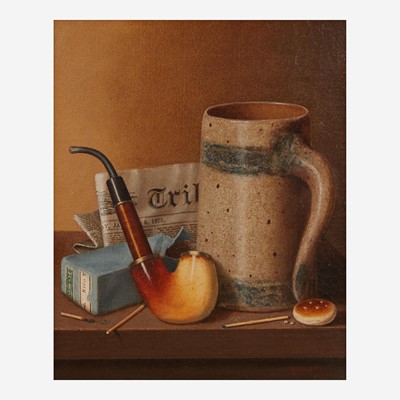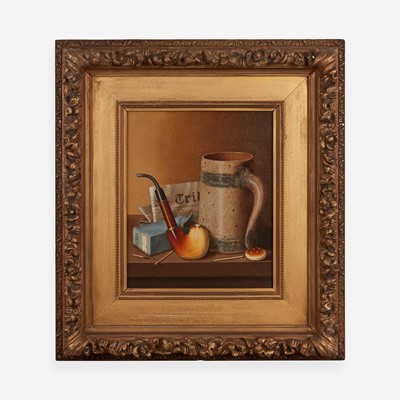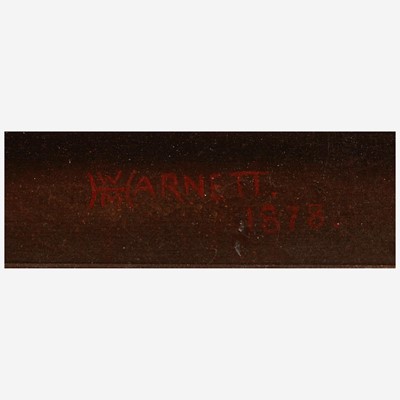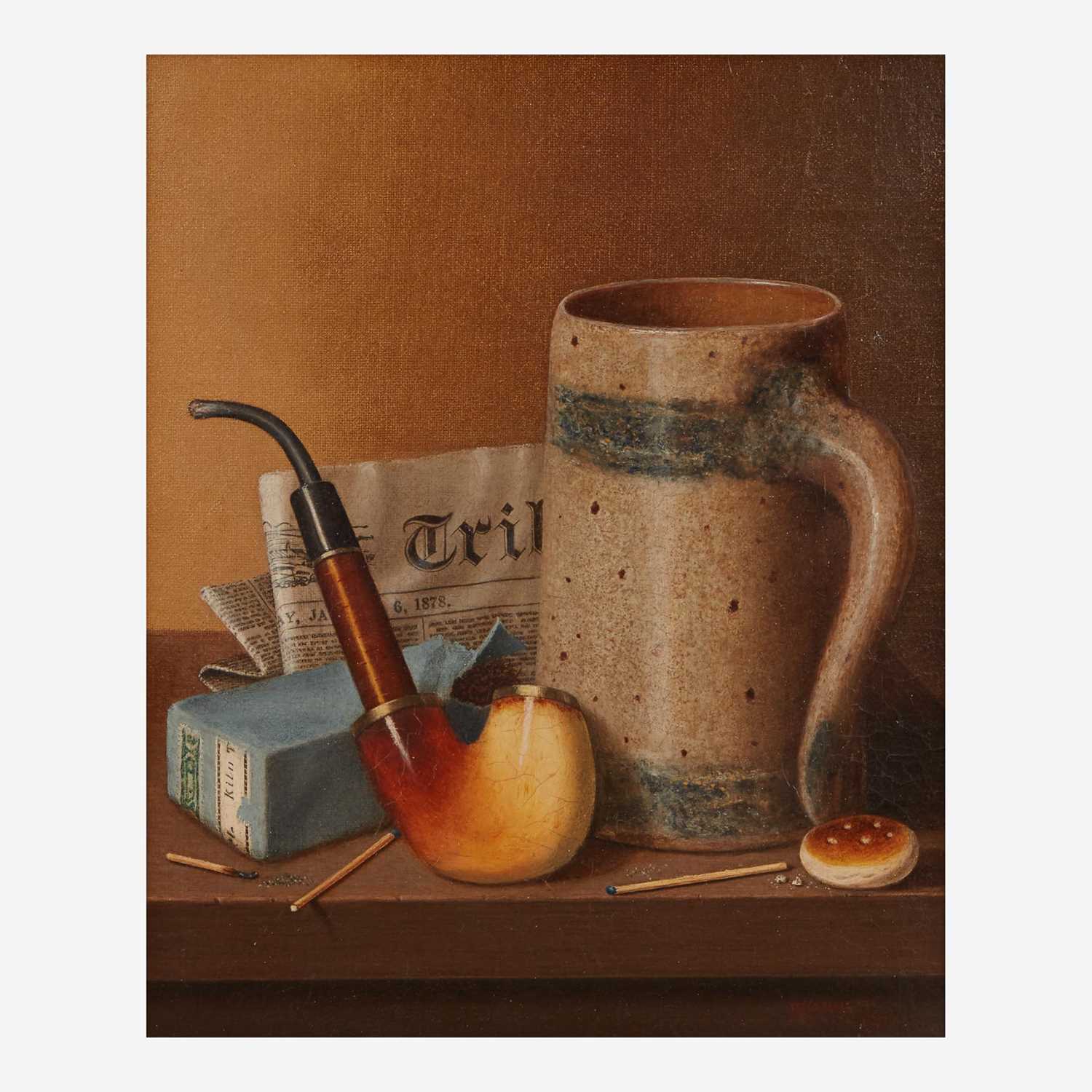June 6, 2022 14:00 EST
American Art and Pennsylvania Impressionists
17
William Michael Harnett (American, 1848–1892)
Still Life with New York Tribune, Beer Stein, Pipe and Tobacco
Signed with Artist's initialed monogram and dated 'WMHarnett/1878' bottom right; with original preparer's label on upper stretcher verso, oil on canvas
12 x 10 in. (30.5 x 25.4cm)
Provenance
Kleemann Galleries, New York, New York.
(Presumably) acquired directly from the above.
Collection of Miss Grace Hill, Jersey City, New Jersey (by 1940s).
By descent in the family.
Private Collection, Arizona.
Sold for $53,235
Estimated at $40,000 - $60,000
Signed with Artist's initialed monogram and dated 'WMHarnett/1878' bottom right; with original preparer's label on upper stretcher verso, oil on canvas
12 x 10 in. (30.5 x 25.4cm)
Provenance
Kleemann Galleries, New York, New York.
(Presumably) acquired directly from the above.
Collection of Miss Grace Hill, Jersey City, New Jersey (by 1940s).
By descent in the family.
Private Collection, Arizona.
Note
William Harnett is mostly known for his trompe l'oeil still-lifes, often featuring trophy hunts, pistols, tankards, music sheets, instruments and all sorts of ordinary, everyday items. An undisputed champion of illusionism, he perfected his meticulous style at the Pennsylvania Academy of the Fine Arts, where he studied 17th Century Old Masters, in addition to discovering the art of Raphaelle Peale.
In January 1880, Harnett sailed to Europe. He stayed in Munich between 1881 and 1886, where his painting took a new, drastic turn. There, the artist famously went on to produce a series of extremely small canvases marked by a freer technique, and a deft, miniaturistic, almost microscopic touch. His new style culminated in a series of eleven recorded horizontal still-lifes, all involving a tabletop with a gray stoneware jug or beer stein at the right, a Meerschaum pipe laid flat, a book and a folded, dated, newspaper.
Larger in size and looser in technique, the present lot evidently predates Harnett's series of small canvases. It was most likely executed in the United States, just before the artist embarked on his European journey, and therefore provides an insightful perspective into the artist's technical evolution. The still-life channels hallmarks of Harnett's known, earlier oeuvre, and yet also touches on to a new burgeonning style. In the foreground stands a wooden table-top, with edges parallel to the picture plane - a trait typical of Harnett who, unlike the non-illusionistic painters, preferred to introduce tables straight on so as to lead the viewer's eye into deep space. On it, one can spot a beer mug, a yellow pipe, a bag of tobacco, burnt matches and a biscuit - all recurring props in Harnett's compositions. However, the artist introduces a new, bold and dramatic element to his sill life in the background: a folded copy of the New York Tribune. Dated January 6, 1878, it makes of the present work one of the earliest compositions featuring a folded newspaper.
The presence of a dated newspaper is meant to reinforce the illusion of reality, and ground the picture in a known, relatable and realistic dimension. Here however, the folded newspaper paradoxically conveys a sense of timelesness, especially in regards to the abstract, neutral golden brown backdrop. This atmosphere is typical of Harnett's pre-1880 canvases. It gives the picture space a definite, shallow limit, enabling the viewer's eye to focus on the table-top in the foreground, and not be distracted by a "noisy" background. In short, it enhances the effect of trompe l'oeil. In his later canvases, Harnett will abandon this neutrality to render a meticulously-rendered background, alternatively draped by a piece of cloth, or fully carved and decorated.




